Madhya Pradesh history
Madhya Pradesh, often referred to as the “Central Province” of India, is a state that stands out for its geographical significance and cultural heritage. Its capital, Bhopal, and its largest city, Indore, are complemented by other major cities like Jabalpur and Gwalior. The state holds the title of being India’s second largest by area and the fifth largest by population, with a population exceeding 72 million.
It shares its borders with Uttar Pradesh, Chhattisgarh, Maharashtra, Gujarat, and Rajasthan. Historically, the region now known as Madhya Pradesh was part of the ancient Avanti Mahajan pada, with Ujjain (Avantika) as its significant urban center during the second wave of Indian urbanization in the 6th century BCE. Over time, it came under the rule of several prominent dynasties, including the Maratha Empire, which dominated the region in the 18th century.
Following the Third Anglo-Maratha War, it was divided into princely states under British control, later forming parts of the Central Provinces and Berar and the Central India Agency. Post-independence, the state underwent significant changes. Initially, Nagpur served as its capital. However, in 1956, the state was reorganized, merging territories from Madhya Bharat, Vindhya Pradesh, and Bhopal, while the Vidarbha region joined Bombay State.
Madhya Pradesh: A Rich Tapestry of History, Culture
This reorganization made Madhya Pradesh the largest Indian state by area until 2000, when Chhattisgarh was carved out as a separate state. Economically, Madhya Pradesh ranks as the 10th-largest in India, with a gross state domestic product (GSDP) of ₹9.17 trillion (US$110 billion) and a per capita income of ₹109,372. The state is rich in mineral resources, boasting India’s largest reserves of diamonds and copper. Over 25% of its land is covered with forests, supporting a thriving tourism industry that earned national recognition through the National Tourism Awards in 2010–11. Recent years have seen the state’s GDP growth consistently surpass the national average.
Prehistoric Period: The Dawn of Human Settlements
The history of Madhya Pradesh begins in prehistoric times, marking it as one of the earliest regions in India to witness human habitation. Archaeological evidence from the Narmada Valley reveals the presence of Homo erectus as early as 500,000 years ago. The discovery of fossils near Hathnora is among the most significant findings in South Asia, providing invaluable insight into early human life.
The Bhimbetka Rock Shelters, located near Bhopal, are a UNESCO World Heritage Site and a testament to early human creativity. These shelters, over 500 in number, are adorned with Mesolithic rock paintings that are approximately 30,000 years old. The paintings depict hunting scenes, communal activities, and symbolic motifs, illustrating the life of early humans who thrived on hunting and gathering.
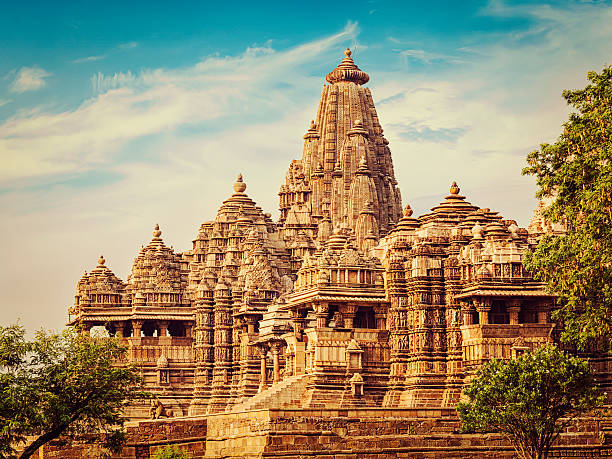



In addition to Bhimbetka, evidence of Chalcolithic settlements like those of the Kayatha and Malwa cultures shows the gradual progression of human civilization. These cultures, dating back to 2100–1500 BCE, practiced agriculture, domesticated animals, and created advanced pottery. Artifacts unearthed from these sites, including tools and ceramics, indicate the early adaptation of technology and craftsmanship.
These prehistoric developments not only underline Madhya Pradesh’s central role in India’s ancient history but also its continuity of habitation, making it a cradle of early human civilization. The geographical features, including fertile plains, river systems like the Narmada and Chambal, and natural caves, provided an ideal environment for the sustenance and growth of these early communities.
Ancient Period: Rise of Kingdoms and Early Empires
Madhya Pradesh’s prominence as a center of early kingdoms and empires began with the rise of the Avanti Kingdom around 6th century BCE. Avanti, with its capital at Ujjain, was one of the sixteen Mahajanapadas (great kingdoms) in ancient India. Ujjain was not just a political hub but also a cultural and trade center, influencing the surrounding regions significantly.
The region came under the Mauryan Empire in the 4th century BCE when Chandragupta Maurya unified most of India. Emperor Ashoka, one of the greatest rulers of the Mauryan dynasty, left an indelible mark on Madhya Pradesh’s history. Ashoka’s edicts, inscribed on rocks and pillars in places like Sanchi and Vidisha, promote the tenets of Buddhism and ethical governance.

Sanchi Stupa, built under Ashoka’s reign, remains a UNESCO World Heritage Site and a symbol of Buddhist heritage. This massive dome, surrounded by intricately carved gateways, served as a Buddhist shrine, attracting pilgrims from across Asia.
The decline of the Mauryas gave way to the rise of the Shungas, Satavahanas, and the influence of foreign rulers like the Indo-Greeks. The Heliodorus Pillar, erected in Vidisha by a Greek ambassador in the 2nd century BCE, showcases the confluence of Greek and Indian cultures. It is one of the earliest examples of Vaishnavism and cross-cultural exchange in India.
The Gupta Empire further solidified Madhya Pradesh’s cultural legacy during the 4th to 6th centuries CE. Known as the “Golden Age” of India, this era saw immense progress in arts, sciences, and literature. The Bagh Caves, adorned with Buddhist murals, and inscriptions across the state highlight the Gupta era’s artistic achievements.
Medieval Period: Rajput Dynasties and Sultanates
The medieval history of Madhya Pradesh is marked by the rise and fall of Rajput dynasties, followed by invasions and the establishment of Islamic sultanates. The Paramaras of Malwa and the Chandelas of Bundelkhand were among the most prominent Rajput dynasties to shape the region during the 7th to 12th centuries.
The Paramaras, with their capital at Dhar, achieved significant cultural and political milestones. King Bhoja, one of the most celebrated rulers of the Paramara dynasty, was a polymath and an ardent patron of the arts and sciences. Bhojpur, a town near Bhopal, houses the incomplete Bhojeshwar Temple, dedicated to Lord Shiva, showcasing remarkable architectural ambition.
Simultaneously, the Chandelas of Bundelkhand left an indelible mark through the construction of the Khajuraho Temples. These intricately carved temples, now a UNESCO World Heritage Site, depict a blend of spiritual devotion and artistic excellence. The temples are famous for their exquisite sculptures that portray gods, celestial beings, and scenes of daily life.
The 13th century saw the region falling under the Delhi Sultanate. The Tomar dynasty of Gwalior retained semi-autonomy, contributing to the fortifications and temples within Gwalior Fort, which stands as a magnificent example of medieval architecture.
In the 14th century, the establishment of the Malwa Sultanate introduced Indo-Islamic architecture to Madhya Pradesh. Mandu, the Sultanate’s capital, became a prominent city adorned with palaces, mosques, and step-wells. Structures like Jahaz Mahal (Ship Palace) and Hindola Mahal (Swing Palace) remain testaments to this era’s architectural innovation.
By the 18th century, the Marathas emerged as dominant powers, with the Holkars, Scindias, and Bhonsles controlling significant territories. Ahilyabai Holkar of Indore earned widespread respect for her administrative reforms and contributions to temple restoration across India.
Colonial Era: British Domination
Madhya Pradesh underwent significant transformation under British colonial rule. Following the Third Anglo-Maratha War (1817–1818), the British annexed large parts of central India. The region was divided into princely states and the Central Provinces and Berar, with its administrative capital initially in Nagpur.
The princely states of Gwalior, Indore, Bhopal, and Rewa played a crucial role in shaping the region’s identity during the colonial era. While these states enjoyed semi-autonomy, they were often subservient to the British Crown, paying tribute and adhering to colonial directives.
Madhya Pradesh also witnessed significant participation in India’s freedom struggle. The 1857 Revolt, also called India’s First War of Independence, saw fierce resistance from local leaders such as Rani Avantibai Lodhi, who led an uprising in Ramgarh, and Tatya Tope, who fought valiantly against British forces.
During the late 19th and early 20th centuries, the region saw the rise of nationalist leaders. Chandra Shekhar Azad, born in Bhavar (present-day Ali Rajpur district), became a revolutionary icon, inspiring countless Indians to join the struggle for independence. Similarly, Dr. B. R. Ambedkar, hailing from Mhow, played a pivotal role in drafting the Indian Constitution and championing social justice.
Post-Independence Period and Modern Era
With India’s independence in 1947, Madhya Pradesh emerged as a significant state in the Indian Union. Initially formed in 1950, it included the Central Provinces, Berar, and princely states like Makrai and Chhattisgarh, with Nagpur as its capital. The State Reorganization Act of 1956 resulted in a significant restructuring, transferring Nagpur to Maharashtra and making Bhopal the state capital.
In 2000, Madhya Pradesh was bifurcated to form the state of Chhattisgarh, reducing its size but allowing better governance for the southeastern regions.
Today, Madhya Pradesh is known for its rich cultural legacy, diverse heritage, and thriving economic sectors like agriculture, mining, and tourism. The state continues to attract visitors to its historic sites, national parks, and spiritual centers.
Geography of Madhya Pradesh
Location and Topography
Madhya Pradesh, aptly named the “Central Province,” is situated in the heart of India, between 21.6°N–26.30°N latitude and 74°9’E–82°48’E longitude. The state spans the Narmada River, flanked by the Vindhya and Satpura ranges, which demarcate northern and southern India. Dhupgarh, the highest point in the state, rises to 1,350 meters in the Satpura range.
The state shares borders with Gujarat, Rajasthan, Uttar Pradesh, Chhattisgarh, and Maharashtra, reflecting its central role in connecting various regions of the country.

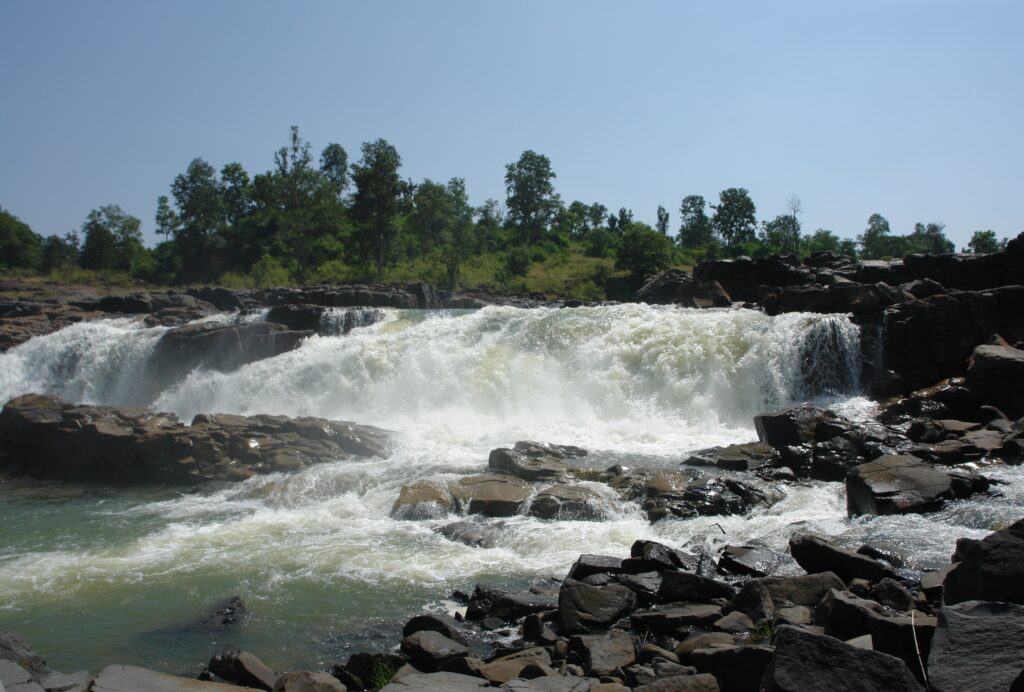

Climate
Madhya Pradesh experiences three primary seasons:
- Summer (March–June): Temperatures often exceed 42°C, particularly in regions like Gwalior and Morena.
- Monsoon (June–September): The state receives the majority of its rainfall, with eastern districts like Jabalpur and Mandla experiencing heavy showers.
- Winter (November–February): Winters are pleasant, with temperatures dipping to 15–18°C in the northern regions.
The annual average rainfall stands at 1,194 mm, with variations between the southeastern and northwestern parts of the state.
Soil Types
The diverse topography of Madhya Pradesh gives rise to varied soil types, including:
- Black Soil: Found predominantly in Malwa and Mahakoshal regions.
- Red and Yellow Soil: Common in Baghelkhand.
- Alluvial Soil: Found in northern parts.
- Laterite Soil: Located in highland areas.
- Mixed Soil: Found in Gwalior and Chambal divisions.
Flora and Fauna
Madhya Pradesh is a haven for biodiversity, with 30.7% of its land area covered by forests, accounting for 12.3% of India’s total forest area. The state is home to eleven national parks, including the renowned Bandhavgarh, Kanha, Pench, and Satpura National Parks. These parks also serve as Project Tiger areas, safeguarding India’s tiger population.







Key Wildlife:
- State Symbols:
- Animal: Barasingha (swamp deer).
- Bird: Indian paradise flycatcher.
- Tree: Banyan.
- Flower: Madonna lily.
Rivers and Waterways
The state’s rivers form lifelines for its inhabitants and ecosystems.
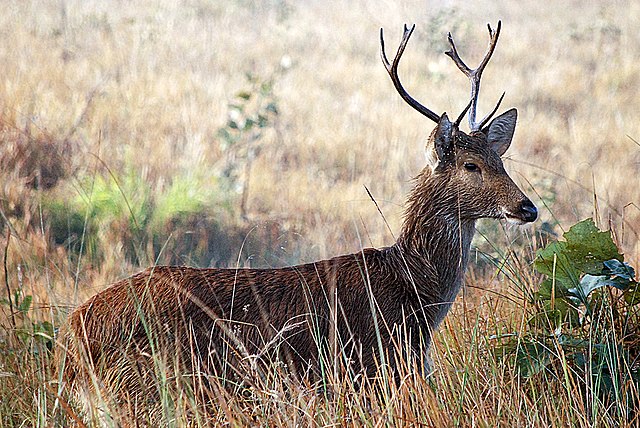





- Narmada River: The longest river in the state flows westward through a rift valley, flanked by the Vindhya and Satpura ranges.
- Tapti and Chambal Rivers: Other significant water systems supporting agriculture and wildlife.
- Sacred Rivers: The Shipra River, associated with the Simhastha Kumbh Mela, holds immense religious significance.
Administrative Divisions and Cities
Madhya Pradesh is administratively divided into 55 districts grouped under 10 divisions, including Bhopal, Indore, Jabalpur, and Ujjain. These divisions facilitate governance and development initiatives.
Key Cities (Population as per 2011 Census):
- Indore: 2,167,447
- Bhopal: 1,883,381
- Jabalpur: 1,267,564
- Gwalior: 1,101,981
- Ujjain: 593,368
Demographics
Madhya Pradesh is home to diverse ethnicities, with significant Scheduled Tribe (21.1%) and Scheduled Caste (15.6%) populations. Prominent tribes include the Gond, Bhil, Baiga, and Korku.
- Population (2011): 72.6 million.
- Human Development Index (2018): 0.606, ranking 33rd among Indian states.
The state demonstrates its commitment to sustainable development, ranking 21st on India’s SDG Index, with notable progress in gender equality and water conservation.
Languages of Madhya Pradesh
Official Language: Hindi
- Usage in Administration: As the official language, Hindi is used in all government correspondence and administrative processes. It is also the language of instruction in most schools and universities in the state.
- Cultural Impact: Hindi, in its Standard and regional forms, reflects the linguistic unity of Madhya Pradesh while embracing its regional diversity.






Regional Dialects and Their Unique Features
- Malvi (6.44%) and Nimadi (3.16%):
- Malvi is spoken in regions like Ujjain, Indore, and Ratlam. Its vocabulary is influenced by Rajasthani and Gujarati.
- Nimadi, prevalent in Khandwa and Khargone, has melodic tones and is closely associated with the cultural heritage of the Nimar region.
- Bundeli (5.92%) and Bagheli (3.62%):
- Bundeli is the predominant language in Bundelkhand, spoken in areas like Sagar and Tikamgarh. It is famous for folk tales and songs narrating the bravery of Rani Lakshmi Bai and Alha-Udal.
- Bagheli, common in Rewa and Satna, has rich literary traditions and forms a linguistic bridge to Awadhi and Chhattisgarhi.
- Chhattisgarhi (Southeast):
- Spoken in areas bordering Chhattisgarh, this language is known for its rustic charm and vivid folk expressions.
- Powari (Southern Madhya Pradesh):
- Used in remote southern regions, Powari is primarily spoken by tribal communities, forming an essential part of their cultural identity.
Marathi Influence
- Historical Background: Marathi-speaking communities trace their roots to the Maratha rule, which dominated central India in the 18th century.
- Current Spread: While concentrated in southern districts, Marathi speakers are prominent in urban areas such as Indore and Burhanpur, contributing to the multilingual fabric of the state.
Tribal Languages
- Bhil Languages (2.50%):
- Spoken primarily in Barwani, Jhabua, and Alirajpur, the Bhil languages are intertwined with the folk traditions and oral history of the Bhil tribe.
- Sub-dialects like Bareli and Bhilali have distinctive phonetic styles.
- Gondi (1.60%):
- The Gondi language is vital to the identity of the Gond tribes, who are among the oldest inhabitants of the state. Gondi literature includes myths, legends, and nature-centric songs.
- Korku (1.36%) and Nihali:
- Korku, spoken in the Satpura highlands, is a Munda language known for its rich storytelling tradition.
- Nihali, a language isolate, is rare and unique, spoken only by a small group in Burhanpur, and is considered endangered.
Educational Policies
- Schools follow the Three Language Formula to promote multilingual proficiency:
- First Language: Students choose from Hindi, Urdu, or a Scheduled Language.
- Second Language: Options include Hindi, English, or Urdu.
- Third Language: Students can opt for foreign languages like French or Persian, broadening their global exposure.
Religion in Madhya Pradesh
Hinduism (90.89%)
- Dominance Across the State: Hinduism influences the cultural ethos, festivals, and daily life in Madhya Pradesh.
- Major Pilgrimage Sites:
- Ujjain (Mahakaleshwar Temple): One of the 12 Jyotirlingas, it is a center for Shaivite worship.
- Omkareshwar: Located on the Narmada River, it is revered for its architectural beauty and spiritual significance.
- Chitrakoot: Believed to be the place where Lord Ram spent part of his exile.
- Festivals: Celebrations like Diwali, Holi, and Navratri are observed with grandeur.
Islam (6.57%)
- Urban Concentrations: The Muslim population is centered in cities like Bhopal and Burhanpur.
- Prominent Islamic Monuments:
- Taj-ul-Masajid (Bhopal): One of the largest mosques in India, showcasing Mughal-inspired architecture.
- Burhanpur: Known for its tombs and mosques, reflecting the era of Mughal and Faruqi rule.
- Cultural Contributions: Urdu poetry and calligraphy remain a vital part of the Islamic community in the state.
Jainism (0.78%)
- Centers of Worship:
- Bawangaja: Famous for its 84-ft statue of Lord Rishabhdev carved out of a single rock.
- Sonagiri: A pilgrimage center near Datia, with numerous Jain temples.
- Jainism thrives in urban centers like Indore and Ujjain, with strong emphasis on non-violence and vegetarianism.
Buddhism (0.30%)
- Historical Influence: Madhya Pradesh was a significant center of Buddhism during Emperor Ashoka’s reign. Sanchi Stupa, built by Ashoka, stands as a testament to this heritage.
- Modern Revival: Followers of Dr. B.R. Ambedkar, primarily from the Dalit community, practice Buddhism in southern districts.
Christianity (0.29%)
- Spread Through Missionaries: Christian missions have established schools, hospitals, and churches in urban and tribal regions.
- Churches: Prominent churches in cities like Indore and Bhopal serve the Christian community.
Sikhism (0.21%)
- Communities in Urban Centers: Sikh communities in Indore, Bhopal, and Gwalior maintain gurdwaras, promoting spiritual and cultural values.
Adivasi Religions (1.07%)
- Nature Worship: Tribal religions, such as Koya Punem, emphasize reverence for nature, ancestors, and spirits.
- Cultural Practices: Festivals, dances, and rituals align closely with their natural surroundings and agricultural cycles.
Culture of Madhya Pradesh
Heritage and Architecture
- UNESCO World Heritage Sites:
- Khajuraho: Known for its erotic sculptures, these temples symbolize the artistic heights of the Chandela dynasty.
- Sanchi: A Buddhist monument showcasing intricate carvings and historical significance.
- Bhimbetka Rock Shelters: Prehistoric art depicting the life of early humans.
- Other iconic sites include Gwalior Fort, Orchha, and Mandu, which showcase diverse architectural styles from Hindu, Muslim, and tribal influences.



Art and Craft
- Bagh Prints: Originating from Bagh village, these hand-block prints feature vegetable dyes and traditional patterns.
- Zari Work: Intricate embroidery, popular in cities like Indore and Bhopal.
- Terracotta and Tribal Art: Tribes like the Bhils and Gonds excel in wood carving, terracotta art, and wall paintings.






Music
- Hindustani Classical:
- Gwalior Gharana: The oldest gharana, emphasizing intricate raga structures.
- Legends like Tansen and Kumar Gandharva have roots in the state.
- Folk Music:
- Styles like Pandwani Gayan and Alha narrate heroic tales, while Nirgunia focuses on spiritual themes.
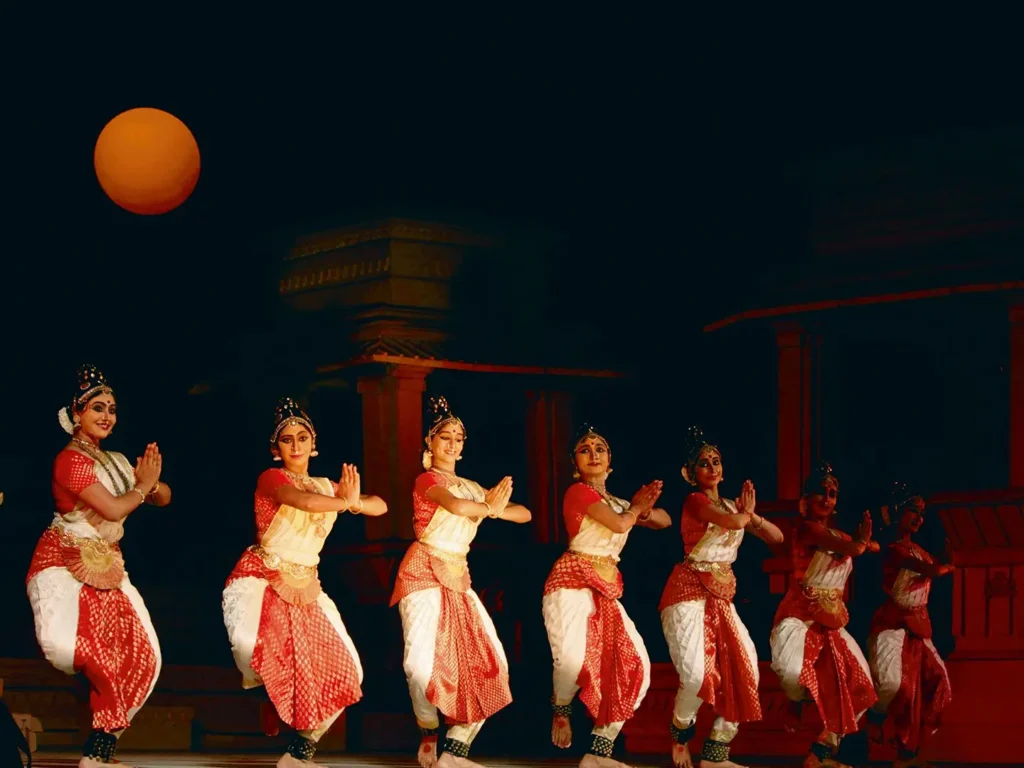

Dance
- Folk dances reflect the life and culture of the state:
- Rai and Karma: Performed during festivals and community gatherings.
- Saila: A post-harvest tribal dance involving synchronized steps.
- Matki: A dance of joy performed by women.
Festivals and Celebrations
- Festivals like Bhagoria (tribal festival) and Gangaur celebrate community spirit and nature.
Economy of Madhya Pradesh: A Comprehensive Overview
The economy of Madhya Pradesh, the “Heart of India,” is characterized by its diverse sectors, ranging from agriculture and mining to industrial development and tourism. Here’s a deeper dive into its various facets:
Gross State Domestic Product (GSDP)
Madhya Pradesh’s nominal GSDP for 2013–14 was ₹4,509 billion (approximately US$72.7 billion), indicating steady economic growth. The state’s GSDP growth rate witnessed a significant rise from 3.5% during 1999–2008 to 12% during 2011–12. However, the per capita income of US$871.45 in 2013–14 ranked as the sixth-lowest in India, highlighting the need for more inclusive economic development.
Agricultural Strength
Madhya Pradesh’s economy remains predominantly agrarian. Major crops include:
- Food Grains: Wheat, rice, maize, and gram.
- Cash Crops: Soybean, sugarcane, cotton, and mustard.
- Special Produce: The state leads in honey production, particularly in Morena district.
- Minor Forest Produce (MFP): Items like tendu leaves, sal seeds, teak seeds, and lac play a crucial role in supporting rural livelihoods.
The state’s proactive approach to irrigation and agricultural technology has improved crop yields, positioning it as a leading producer in several categories.
Industrial Growth and Special Economic Zones (SEZs)
Madhya Pradesh has established five SEZs focusing on diverse sectors:
- IT/ITES: Located in Indore and Gwalior.
- Mineral-Based: Jabalpur.
- Agro-Based: Jabalpur.
Prominent industrial hubs, such as the Indore-Dewas-Pithampur and Mandideep (Bhopal) belts, host industries in sectors like:
- Mechanical and industrial parts.
- Pharmaceuticals and chemicals.
- Textiles, FMCG, and food processing.
Additionally, consumer goods giants have set up manufacturing units due to the state’s strategic central location.
Natural Resources and Mining
Madhya Pradesh is rich in natural resources, including:
- Diamonds: The state boasts the largest diamond reserves in India.
- Copper and Coal: Major contributors to the industrial sector.
- Other Minerals: Manganese, dolomite, and coalbed methane.
These resources fuel industrial growth and energy production.
Defense Manufacturing and Currency Printing
Madhya Pradesh is home to six Ordnance Factories, with four located in Jabalpur. These factories produce vital equipment for the Indian Armed Forces. The Bank Note Press in Dewas prints Indian currency notes, while the Security Paper Mill in Hoshangabad produces banknote paper and non-judicial stamp paper.
Tourism Industry
Tourism plays a pivotal role in the state’s economy. Key attractions include:
- Heritage Sites: Sanchi Stupa and Khajuraho Temples.
- Wildlife Tourism: National parks like Kanha and Bandhavgarh.
- Cultural Hubs: Ujjain, Mandu, and Orchha. The government’s focus on infrastructure development and marketing has boosted the tourism sector significantly.
Infrastructure: Power, Transport, and Urban Development
Energy Sector
Madhya Pradesh has made remarkable strides in power generation, with an installed capacity of 27,108.55 MW as of 2024. The energy mix includes:
- Thermal Power: Dominates with 16,387 MW.
- Renewables: Solar and wind energy contribute significantly, with projects like the Rewa Ultra Mega Solar Park (750 MW capacity).
- Hydro and Nuclear: Provide additional capacity.
The Singrauli region, rich in coal reserves, serves as a national energy enclave.
Transport
The state boasts an extensive transport network:
- Roads: Over 99,000 km of roadways, including 8,772 km of national highways.
- Railways: A 4,948-km rail network connects major cities like Bhopal, Indore, and Jabalpur.
- Airports: Indore’s Devi Ahilyabai Holkar Airport is the busiest, with Bhopal and Jabalpur also offering commercial services. Rewa Airport is under construction.
The absence of a coastline is compensated by inland dry ports that facilitate trade via major seaports like Kandla and Jawaharlal Nehru Port in neighboring states.
Urban Development
Urban infrastructure has improved through initiatives like:
- Smart Cities Mission: Seven cities, including Indore and Bhopal, are part of this program.
- Swachh Survekshan: Indore has been India’s cleanest city for seven consecutive years.
Projects under the Jawaharlal Nehru National Urban Renewal Mission (JNNURM) have modernized cities like Bhopal and Jabalpur.
Media Landscape
Madhya Pradesh has a vibrant media presence:
- Hindi Newspapers: Dainik Bhaskar, Dainik Jagran, and Nai Duniya dominate the market.
- English Newspapers: The Times of India and Hindustan Times are widely read.
- Unique Offerings: Bhopal’s Challenge is the only Sindhi newspaper in the state.
Television, radio, and digital platforms are rapidly expanding, reflecting the state’s growing connectivity.
Madhya Pradesh continues to develop across all sectors, leveraging its resources, strategic location, and cultural heritage to pave the way for economic prosperity and infrastructural advancement.
Government and Politics of Madhya Pradesh
Madhya Pradesh, a state located in central India, operates under a parliamentary system of government, which is divided into the Executive, Legislative, and Judicial branches. The state’s political framework is defined by its 230-seat Legislative Assembly. Additionally, Madhya Pradesh elects 40 members to the Parliament of India—29 to the Lok Sabha (Lower House) and 11 to the Rajya Sabha (Upper House).
The constitutional head of the state is the Governor, appointed by the President of India. The executive authority lies with the Chief Minister, who is the elected leader of the state’s legislature. As of now, the current Governor of Madhya Pradesh is Mangubhai C. Patel, while the Chief Minister is Mohan Yadav from the Bharatiya Janata Party (BJP).
Political Landscape
The political history of Madhya Pradesh has seen significant transitions:
- Post-Independence Era (1950s–1970s): The Indian National Congress (INC) was the dominant political force in the state during the early years post-independence. Leaders like Ravishankar Shukla and Kailash Nath Katju were prominent Chief Ministers. However, the rise of parties like the Bharatiya Jana Sangh (BJS) in the 1960s, which eventually evolved into the BJP, marked the start of political diversification.
- Shifting Tides (1980s–1990s): This period witnessed the emergence of regional parties and national alternatives. The Janata Party (JP), Janata Dal (JD), and Bahujan Samaj Party (BSP) made inroads into the state’s politics, challenging the INC’s monopoly.
- Bi-Polar Politics (2000s–Present): Since the early 2000s, the political landscape has largely been dominated by two major parties: the Bharatiya Janata Party (BJP) and the Indian National Congress (INC). Smaller regional parties occasionally influence elections, but the contest between BJP and INC remains the central focus of Madhya Pradesh politics.
Administration of Madhya Pradesh
Madhya Pradesh is administratively divided into 55 districts, which are grouped into 10 divisions. As of 2023, the state comprises various administrative units, including 55 district panchayats, 376 tehsils, 313 blocks (janpad panchayats), and 23,043 village panchayats. The state also has several municipalities, including 18 Nagar Nigams (Municipal Corporations), 100 Nagar Palikas, and 264 Nagar Panchayats.
Major Municipalities
- Bhopal Municipal Corporation – The capital of Madhya Pradesh, Bhopal is the largest city in the state, with over 1.8 million residents. The ruling party in the 2022 elections was BJP.
- Indore Municipal Corporation – Indore, another major city in the state, is known for its commercial significance and a population of over 2.1 million. The BJP held power in the 2022 elections.
- Gwalior Municipal Corporation – Located in Gwalior, a historic city, the ruling party in 2022 was the Indian National Congress (INC).
- Jabalpur Municipal Corporation – With a population of over 1.2 million, Jabalpur’s municipal corporation was also led by the INC as of the last election.
Education in Madhya Pradesh
Madhya Pradesh’s education sector has witnessed notable growth over the years. According to the 2011 census, the literacy rate stood at 69.32%. The state boasts a substantial number of educational institutions, including 105,592 primary schools, 6,352 high schools, and 5,161 higher secondary schools. Additionally, there are 208 engineering and architecture colleges, 208 management institutes, and 12 medical colleges in the state.
Prominent Educational Institutions
Madhya Pradesh is home to several esteemed educational and research institutions. Some of the notable ones include:
- Indian Institute of Technology (IIT), Indore
- Indian Institute of Management (IIM), Indore
- All India Institute of Medical Sciences (AIIMS), Bhopal
- National Institute of Technology (NIT), Bhopal
- Indian Institute of Science Education and Research (IISER), Bhopal
In addition to these premier institutes, Madhya Pradesh has several specialized universities, including Rajiv Gandhi Technical University, Madhya Pradesh Medical Science University, and Jawaharlal Nehru Agriculture University. The state also boasts two central universities: Dr. Hari Singh Gour University (Sagar) and Indira Gandhi National Tribal University (Amarkantak)



Tourism in Madhya Pradesh
Madhya Pradesh, often referred to as the “Heart of India,” boasts a unique blend of cultural heritage, natural beauty, and historical significance, making it a prominent tourist destination. The state has won the Best Tourism State National Award three years in a row (2015, 2016, and 2017) for its efforts in promoting tourism.
Key Tourist Attractions
- Khajuraho Temple Complex: A UNESCO World Heritage Site, Khajuraho is renowned for its intricately carved temples depicting various aspects of life, known for their stunning sculptures.
- Sanchi Stupa: A significant Buddhist monument, the Sanchi Stupa is another UNESCO World Heritage Site, revered for its historical and religious importance.
- Orchha Fort: A historic fort complex in Orchha, famous for its majestic architecture and rich cultural history.
- Kanha National Park: Famous for its Bengal tigers, Kanha National Park is a top wildlife destination.
- Rajwada Palace, Indore: A historical palace in Indore that showcases the grandeur of the Holkar dynasty.
- Gwalior Fort: Known as one of the most spectacular forts in India, Gwalior Fort is a historical site that provides panoramic views of the city.
Natural Environment
Madhya Pradesh’s natural environment is characterized by diverse landscapes, including plateaus, hills, and valleys. The state’s geography is dominated by the Vindhya and Satpura mountain ranges. These mountain ranges give rise to major rivers like the Narmada, Tapti, and Chambal. Nearly half of the state is forested, providing a perfect habitat for a wide variety of wildlife. The National Parks of Madhya Pradesh, such as Kanha, Bandhavgarh, and Shivpuri, offer opportunities to see tigers, bison, and various species of deer and antelope in their natural habitats.
World Heritage Sites
Madhya Pradesh is home to several UNESCO World Heritage Sites, which highlight its rich cultural and architectural history:
- Khajuraho Group of Monuments (1986): Famous for its erotic sculptures and detailed temple carvings, Khajuraho remains one of India’s most iconic sites.
- Sanchi Stupa (1989): A significant Buddhist pilgrimage site, the Sanchi Stupa offers insights into ancient Indian architecture and the Buddhist faith.
- Bhimbetka Rock Shelters (2003): Known for their prehistoric rock paintings, these shelters are a fascinating testament to early human life.
- Orchha and Gwalior (2020): These cities are recognized under the Historic Urban Landscape programme for their rich historical value.





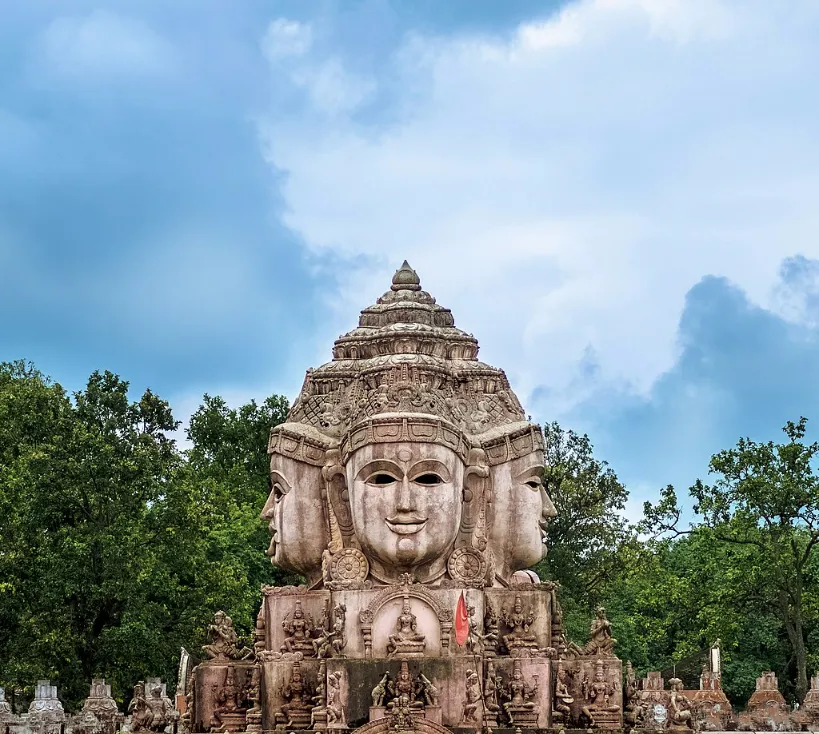

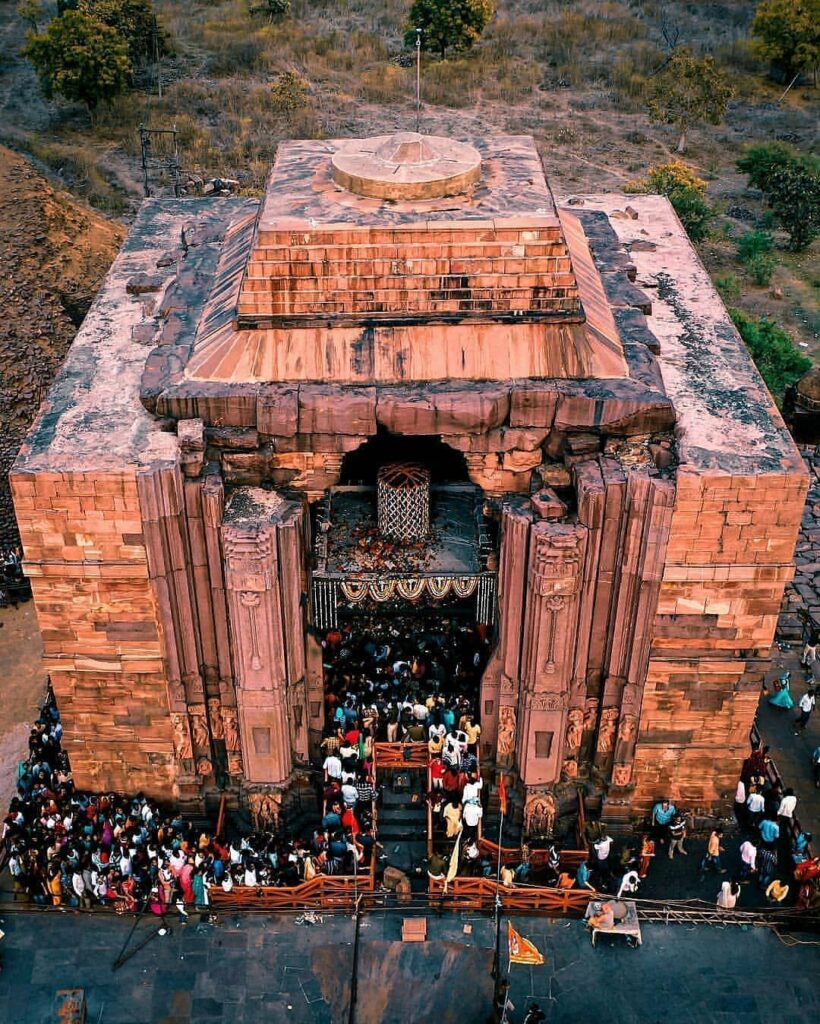




National Parks and Wildlife Sanctuaries
Madhya Pradesh is renowned for its abundant wildlife, with numerous national parks and wildlife sanctuaries:
- Bandhavgarh National Park: Famous for its high density of tigers, Bandhavgarh is one of the most popular national parks in India.
- Kanha National Park: Known for its natural beauty and the Bengal tiger, Kanha is a prime location for wildlife enthusiasts.
- Pench National Park: Situated in the Satpura hills, Pench is known for its rich biodiversity and tiger sightings.
- Satpura National Park: A lesser-known gem, Satpura offers a unique experience of wildlife safaris and adventure activities.
- Panna National Park: Home to white tigers and other endangered species, Panna offers an exciting wildlife experience.
Nature Reserves
Madhya Pradesh is also known for its nature reserves, such as:
- Pachmarhi: A hill station offering a mix of natural beauty and adventure.
- Amarkantak: A religious and natural destination where the Narmada River originates.
- Bhedaghat: Known for the famous Dhuandhar Waterfalls and the Marble Rocks along the Narmada River.
Fairs and Festivals
Madhya Pradesh celebrates a rich variety of fairs and festivals, which showcase its diverse cultural heritage:
- Shivratri in Khajuraho and Ujjain: A grand celebration of Lord Shiva, attracting thousands of devotees.
- Dusshera in Jabalpur and Orchha: A vibrant festival featuring traditional dances and rituals.
- Pachmarhi Festival: Celebrating the tribal culture and folk music of the region.
- Gwalior Trade Fair: One of India’s largest trade fairs, showcasing a variety of industries and products.
Hill Stations
Madhya Pradesh also offers scenic hill stations that provide a cool retreat from the heat:
- Pachmarhi: Known as the “Queen of Satpura,” Pachmarhi is famous for its lush greenery, waterfalls, and caves.
- Amarkantak: A serene hill station and religious destination where the Narmada, Sone, and Johila rivers meet.
- Shivpuri: A historic town with pleasant weather, ideal for a relaxed getaway.
Tourist Attraction: Kutni Dam
The Kutni Dam, located on the Kutni River near Khajuraho, is a significant attraction in Madhya Pradesh. The largest dam in Chhatarpur district, Kutni Dam is known for its picturesque setting and vastness, offering a peaceful escape. It is situated 12 km from Khajuraho and 40 km from Chhatarpur, making it a popular stop for tourists exploring the region.
Sports in Madhya Pradesh
Madhya Pradesh has a rich sporting culture, with a variety of traditional and modern sports practiced across the state. The government declared Mallakhamba, a traditional Indian sport, as the state’s official sport in 2013. The state is also known for promoting both rural and urban sports.
Popular Sports
- Cricket: Cricket is by far the most popular sport in Madhya Pradesh. The state has three international cricket stadiums: Nehru Stadium (Indore), Roop Singh Stadium (Gwalior), and Holkar Cricket Stadium (Indore). The Madhya Pradesh cricket team achieved its best performance in the 1998–99 Ranji Trophy, finishing as the runner-up. In 2022, the team, under the coaching of Chandrakant Pandit, won its first-ever Ranji Trophy title by defeating Mumbai.
- Football: The state has a football team that competes in the Santosh Trophy. MP United FC, which plays in the I-League 2nd Division, is another notable football team from the state.
- Hockey: Hockey is also widely followed in the state, and Aishbagh Stadium in Bhopal serves as the home ground for the Bhopal Badshahs in the World Series Hockey.
- Kabaddi, Volleyball, and Badminton: Alongside cricket and football, sports like kabaddi, volleyball, badminton, and table tennis have gained popularity in Madhya Pradesh. Traditional games such as Kho Kho, Gilli Danda, Sitoliya, Kanche, and Langdi are particularly loved in rural areas.
- Snooker: A cue sport, snooker has a historical connection to Madhya Pradesh, particularly Jabalpur, where British Army officers are believed to have invented it. The game remains popular in various regions, with top players achieving international recognition.

Government Support for Sports
Madhya Pradesh has taken significant steps to encourage sports by offering government jobs to state players who win medals in international events. This initiative, announced by Chief Minister Shivraj Singh Chouhan in December 2017, is aimed at motivating young talent in the state.
Notable People from Madhya Pradesh
Madhya Pradesh has produced many notable individuals who have made significant contributions in various fields, including sports, politics, arts, and science. Some of the famous personalities from the state include:
- Madhu Yadav: A former captain of the India women’s national field hockey team, Yadav was a gold medalist in the 1982 Asian Games and an Arjuna Award recipient.
- Ravishankar Shukla: A prominent political figure and one of the first Chief Ministers of Madhya Pradesh post-independence.
Conclusion
Madhya Pradesh is a state that blends rich cultural heritage with a dynamic sporting culture. Its historical monuments, vibrant tourism industry, and commitment to fostering sporting talent make it an essential part of India’s diverse landscape. The state continues to develop and celebrate its heritage and sports, making it an exciting destination for both visitors and athletes alike.

